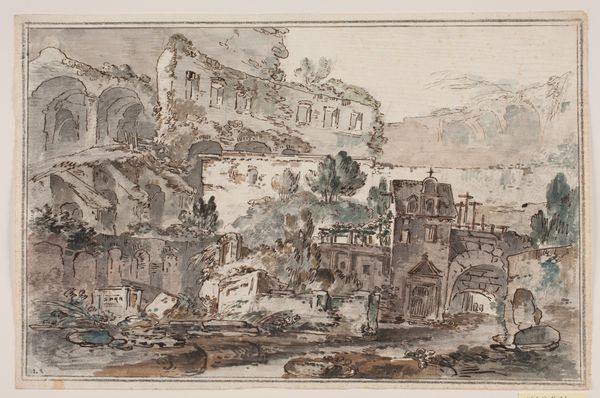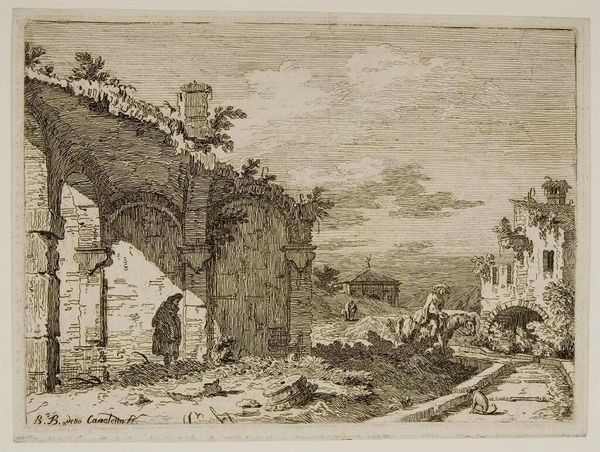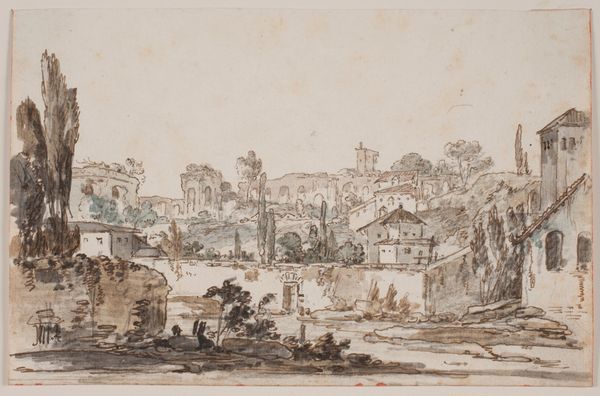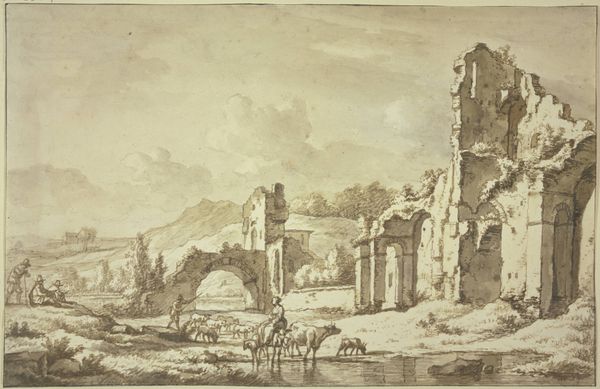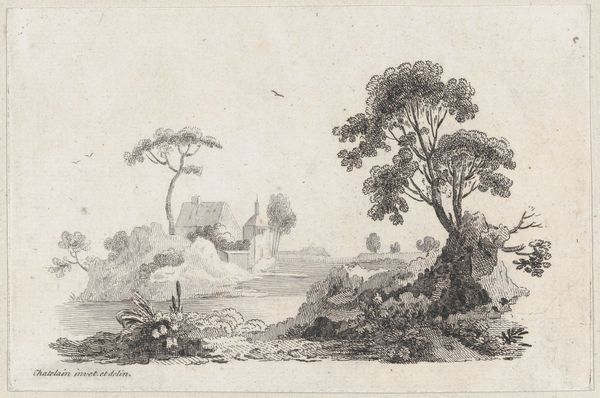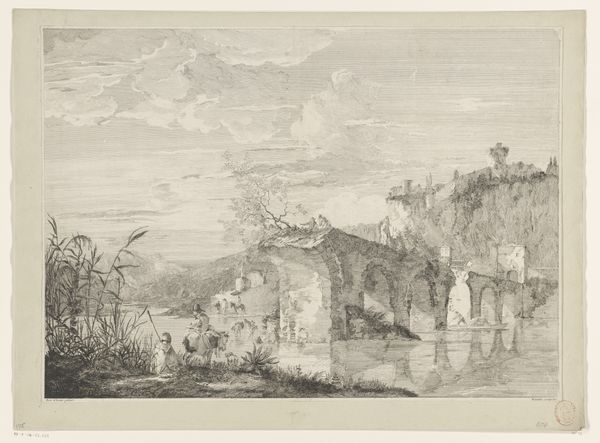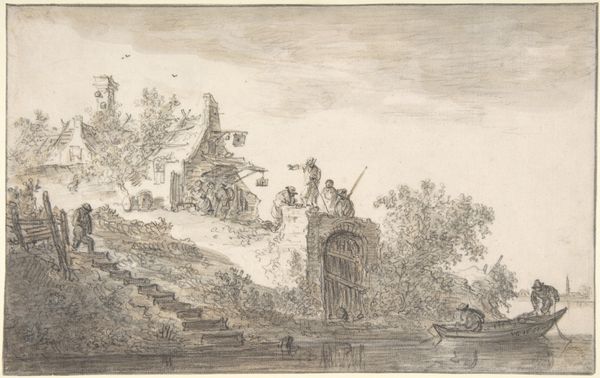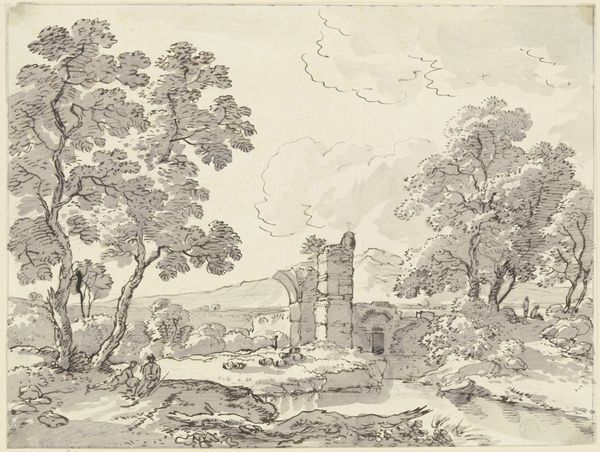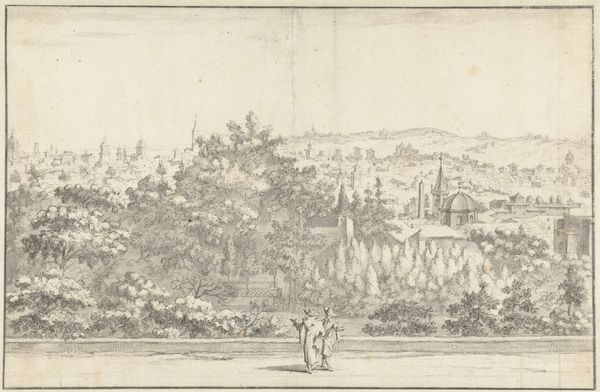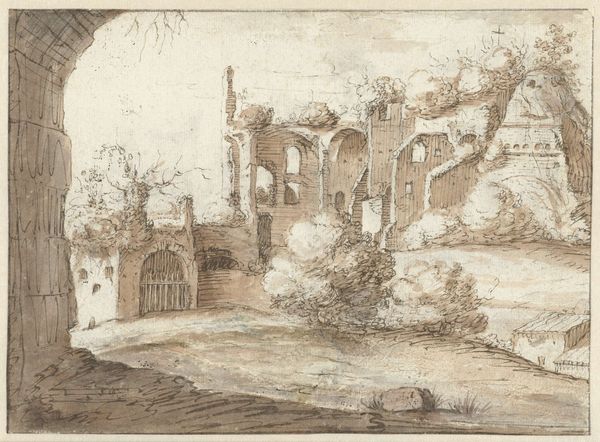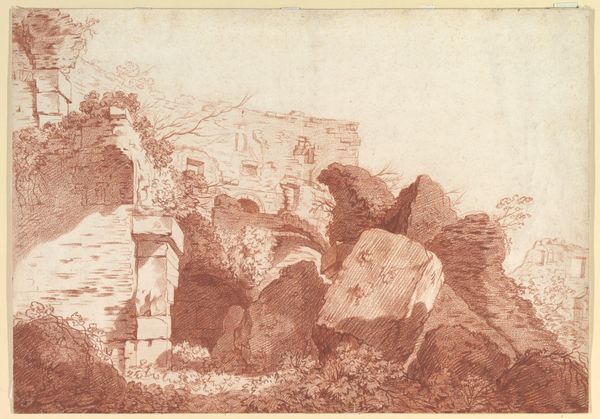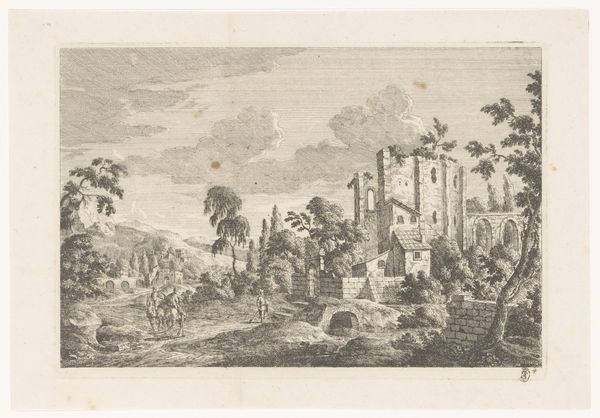
Dimensions: 290 mm (height) x 432 mm (width) (bladmaal)
Editor: So, here we have Jens Petersen Lund's "Prospekt med ruiner, antikkens Rom," created sometime between 1730 and 1793. It’s an etching on paper, using ink. There's something melancholic about it, the ruins evoke a sense of faded glory. What do you see in this piece, looking at it as an art historian? Art Historian: The romanticism here is so striking; we see Rome, not in its present grandeur, but as a collection of crumbling relics. Lund presents us with a visual commentary on the passage of time and the transience of power. It speaks to a northern European fascination with classical antiquity, doesn't it? But notice the almost theatrical framing; how does that affect your understanding? Editor: The theatrical framing you mention, I think it almost feels like the ruins are being presented as a spectacle, a grand show for viewers from Lund’s time…or even for us. Art Historian: Precisely. The ruin became a popular trope, reflecting the political anxieties of the era. Think about how powerful empires rose and fell, shaping cultural identity, which echoes anxieties of his time with rising powers and the changing map of Europe. It almost feels as if by preserving it on paper, he saves it. Does that resonate with you? Editor: Absolutely. Knowing this drawing might also hint at something larger culturally helps make sense of its romantic atmosphere! I guess I wasn't thinking enough about that original audience! Art Historian: Context really unlocks the intended experience, doesn't it? Seeing artwork like this drawing displayed here connects us across time with people asking big questions about permanence and change. What's your takeaway now? Editor: I'll definitely look closer at what these artworks reflected in their contemporary culture; art acts almost as an historical fingerprint, which gives pieces a second life! Thank you!
Comments
No comments
Be the first to comment and join the conversation on the ultimate creative platform.
